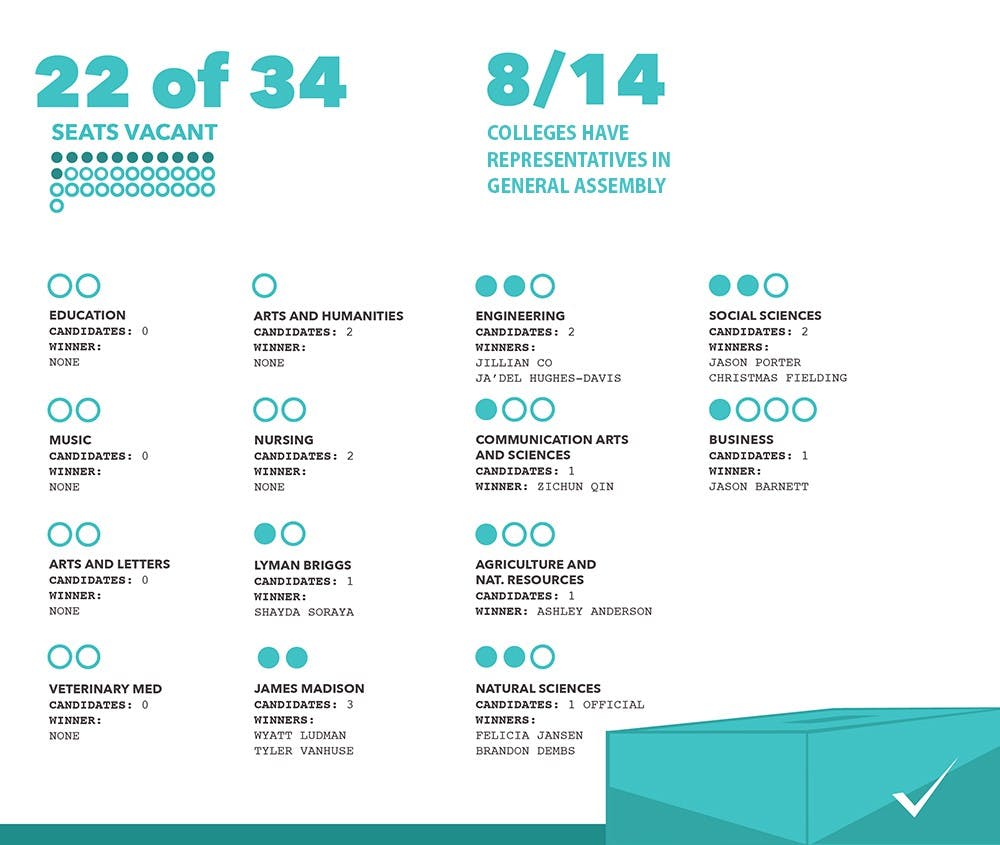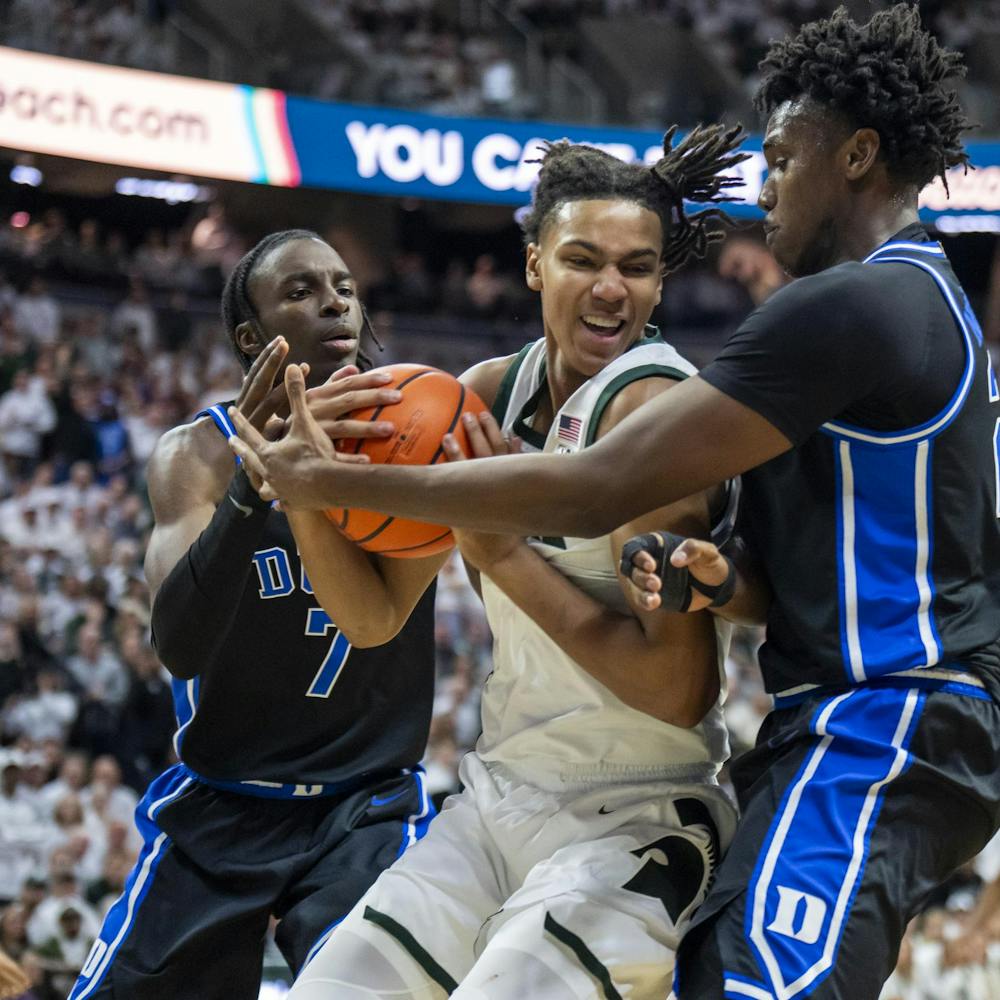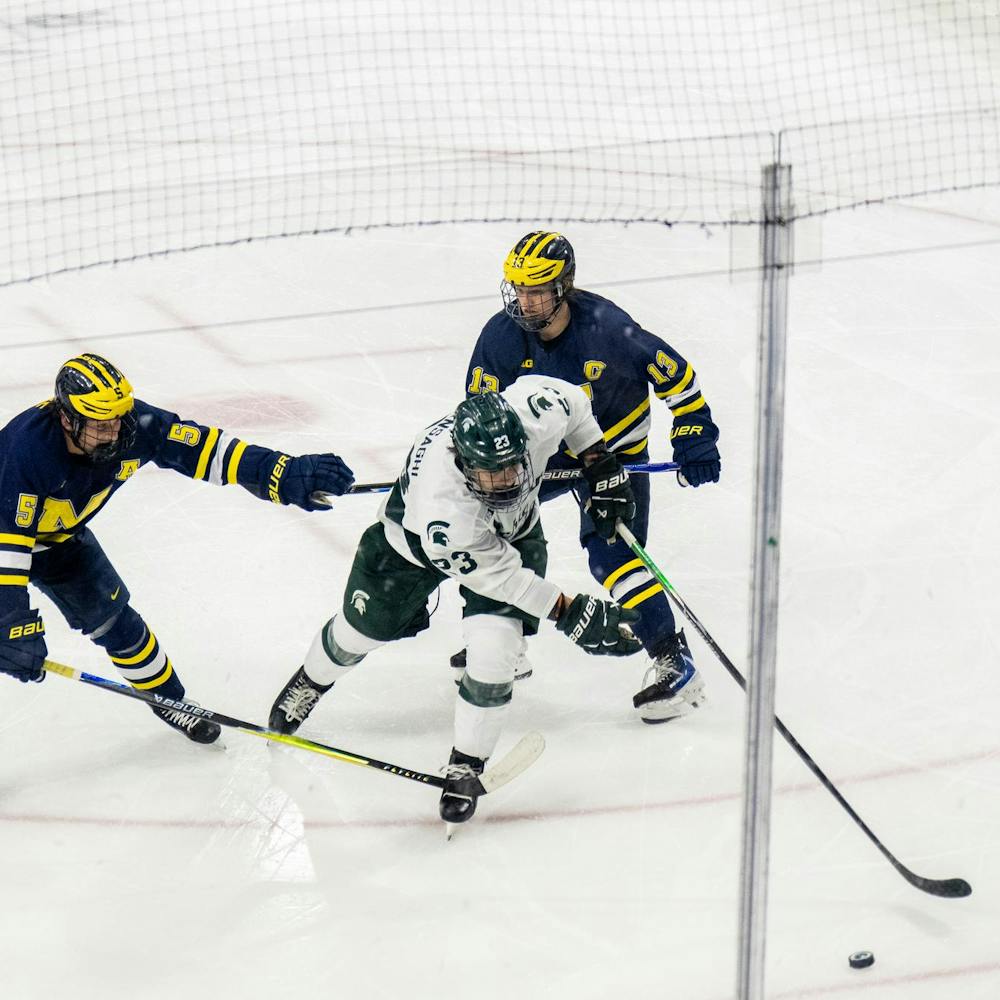1,264 undergraduate students out of 38,786 voted in this year’s ASMSU, MSU’s undergraduate student government’s general assembly election, which is a 3.3 percent turnout and more than 1,000 fewer voters than in 2013, when the State News reported a 9.2 percent voter turnout.
Members of ASMSU’s general assembly hold an important task of electing the new office of the president this week, which consists of six vice presidents and 1 president.
Only eight of 14 colleges in ASMSU’s general assembly will be represented in this week’s undergraduate student government presidential elections.
ASMSU’s general assembly is comprised of 14 degree-granting colleges, eight Major Governing Groups, and 11 Council of Racial and Ethnic Students groups or CORES and Council of Progressive Students groups or COPS, which represent on-campus organizations like the Black Student Alliance.
Representatives for those on-campus organizations are not voted on, rather appointed by their own membership.
This year, 22 elected seats remain vacant in the general assembly, leaving six colleges unrepresented in the office of the president elections.
“It’s always more beneficial to have many colleges and people with many different backgrounds participating in presidential elections to make sure we get a fair representation of college students,” ASMSU James Madison College representative Wyatt Ludman said.
“I feel as though the elected representatives that we have are very well qualified and will make a good decision,” he added.
Other members of ASMSU see the low candidate turnout as a bigger issue because it leaves a large portion of the voting responsibility on representatives from the CORES and COPS groups.
“I think there’s a huge problem there, because basically it’s just the CORES and COPS groups who are choosing the president and a lot of the time those groups send different members at different times,” former ASMSU college of social science representative Evan Schrage said.
With 22 vacant seats, ASMSU will attempt to fill its empty general assembly positions by the end of the year through an appointment process that is intended to take about three weeks.
An interested candidate must get 25 signatures from their college and then an ASMSU committee reviews the candidate’s resume and application and finally the general assembly votes for the candidate’s approval.
The appointment process is designed to choose a candidate that will be engaged, instead of just filling the position blindly, Schrage said.
Although voter turnout has decreased steadily in the last few years, ASMSU members still see this year’s general assembly election as positive.
“We’re really proud of the candidates that did win and worked to engage students, and we did a good job of providing on-campus voting booths and places to give students information,” ASMSU public relations director Ava Jacobs said.
Jacobs also said ASMSU is hopeful that the new general assembly will introduce different legislation this session in order to engage more students and increase voter turnout in the future.
Support student media!
Please consider donating to The State News and help fund the future of journalism.
Discussion
Share and discuss “ASMSU elections yield 3.3 percent voter turnout” on social media.







